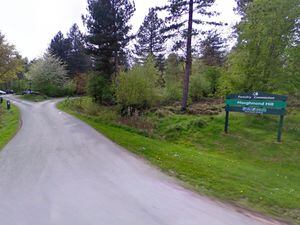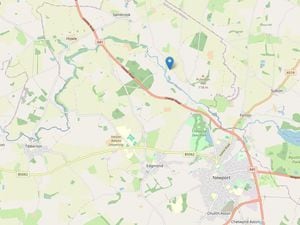Church spotlight: St John the Baptist Church in Hughley
In his seminal book, A Shropshire Lad, the poet Alfred E Housman famously wrote: "The vane on Hughley steeple, veers bright a far known sign. And there lie Hughley people, and there lie friends of mine."
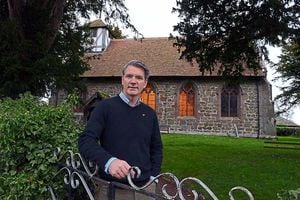
However, fans of Housman visiting the village's St John the Baptist church for the first time, can be forgiven for finding it not quite what they were expecting to see.
For while the church, which dates back to the 12th century, has some exquisite features, one thing it does not have is a steeple – let alone a weather vane.
Lynne Gibbons, who has been involved with the church for the past eight years, says it seems the great man was using a little poetic licence, although it is clear from his words that he held the place with great affection.
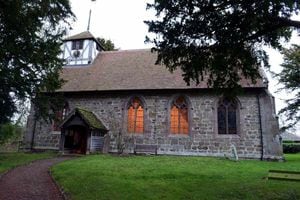
Established prior to 1176.
Capacity about 60.
Main services: Every fourth Sunday at 9.30am.
The church was restored in the 1870s by Richard Norman Shaw, which included creating the trussed rafter roof and restoring the west window.
While there is no steeple, there is a brick and timber bell tower dating from 1701, and an octagonal clock was added by the Earl of Bradford after his horse Sir Hugo won the Derby in 1892.
There are fragments of stained glass in the east and north windows.
"We had the Housman Society come in a couple of years ago and they did a reading, it was really nice," she says.
Lynne, who is secretary of the parochial church council , says the strength of the church lies in its close-knit congregation.
"We are very much a village church, there are only 18 houses in the village, and we have a small congregation," she says.
"We usually get around 10 people, and if somebody is missing one week, we tend to notice. We usually stay back at the end of services for coffee and a chinwag."
And the village's love for the church was perfectly demonstrated seven years ago, when it appeared to be under threat due to urgent roof repairs.
"The congregation managed to raise £92,000, half of that money came from English Heritage, but the rest was raised in the village."
The original building was an ancient chapelry of Much Wenlock, and was founded before 1176. It was rebuilt during the 13th and 14th centuries out of limestone rubble and sandstone ashlar dressing, becoming a parish church in its own right during the 16th century.
Today, the oldest part of the church is the north wall, which has early English lancet windows, and the east and north windows of the chancel still have ancient glass.The rest of the church was built about 1360, towards the end of the Decorated period.
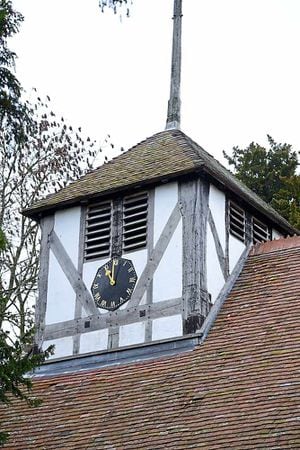
The chancel has some beautifully preserved floor tiles from the late 14th century, with their designs still clear cut.
Lynne is particularly fond of the carved oak Rood Screen, which separates the chancel from the nave. It is believed to have been moved to the church from Buildwas Abbey following the dissolution of the monasteries under Henry VIII.
"We think it may well have been made in Ludlow during the 15th century," she says.
"It's quite naive in design, and you can see that several people have been involved in making it, it's very special.
"The design is composed of birds, grapes and flowers, and it is considered to be the best in the county."
Attached to the south wall level with the window sill is an unusual pillar piscina, something which is not normally seen in Anglican churches. Some of this is said to date from Norman times, and other parts from the Decorated period of the 14th century.
The pulpit is Jacobean and finely carved, while on the east wall there is a 14th century female corbel head which served as an image bracket.
At the western end of the church is the 8ft-long 'Peter Pence Chest' made of hard oak and studded with large nails. The 'pence' was an ecclesiastical tax, formerly paid in England to the Pope.
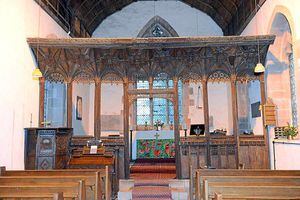
Churchwarden Andrew Coleman says the church is open every day for visitors, and adds that despite the work done to replace the roof, there is still much to be done.
"Plastering needs to be repaired and the windows need restoration, but despite the congregation being small we are committed to maintaining our church for the future," he said.


